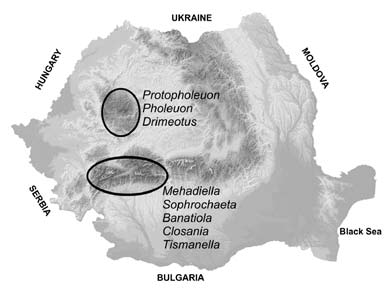Historical Biogeography of Subterranean Beetles – “Plato’s Cave” or Scientific Evidence?
DOI:
https://doi.org/10.3986/ac.v36i1.210Abstract
The last two decades were particularly prolific in historical biogeography because of new information introduced from other sciences, such as paleogeography, by the development of quantitative methods and by molecular phylogeny. Subterranean beetles represent an excellent object of study for historical biogeography because they are the group with the best representation in the subterranean domain. In addition, species have reduced mobility, display different degrees of adaptations to life in caves and many specialists work on this group. Three processes have shaped the present distribution of the tribe Leptodirini (Coleoptera Cholevinae) in the world: dispersal, vicariance, and extinction. Therefore, three successive stages can be established in the space-time evolution of Leptodirini: (1) dispersal from a center of origin in the present area(s); (2) dispersal, extinction and vicariance among the present area(s); and (3) colonization and speciation in the subterranean domain. The Romanian Leptodirini, especially those from Western Carpathians is examined with respect to these processes. Their pattern of distribution in different massifs and at different altitudes is discussed, with possible explanations from a historical biogeographic point of view.
Downloads

Downloads
Published
How to Cite
Issue
Section
License
Authors guarantee that the work is their own original creation and does not infringe any statutory or common-law copyright or any proprietary right of any third party. In case of claims by third parties, authors commit their self to defend the interests of the publisher, and shall cover any potential costs.
More in: Submission chapter




